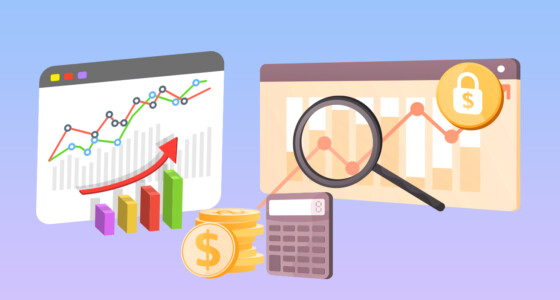

In the following article, we will discuss what EBITA is and how to calculate it. We will also go over other FAQs surrounding EBITA, such as the difference between EBITA and EBITDA, among other things.
What is EBITA?
Investors worldwide use EBITA, which stands for earnings before interest, taxes, and amortization, to estimate a company’s profitability. It helps compare businesses in the same industry to each other. It may also offer a much more realistic picture of the company’s overall performance. It worries investors as EBITA helps evaluate potential dividend payouts.
Key takeaways
- EBITA eliminates interest on the company’s debt, as well as the impacts of amortization, which refers to the accounting practice of deducting expenses of an intangible asset over time from the revenue calculation.
- EBITA could make it simpler to compare different businesses operating in the same sector.
- A more realistic picture of a company’s long-term performance may be obtained using this metric.
Understanding EBITA
Some investors and analysts believe that a company’s EBITA is a more appropriate predictor of its actual returns. It takes out of the calculation the impacts of interest on corporate debt, taxes owing, and amortization.
One advantage is that it clarifies how much money a company can reinvest in itself or pay dividends. It is also a measure of how well the business is doing.
Calculation of EBITA
You must first ascertain the company’s earnings before tax (EBT) to compute a company’s EBITA. The company’s financial statements, plus other investor relations documents, include this metric. Then you should add any tax and amortization fees to this sum.
Here’s what that equation should look like:
EBITA = EBT + Amortization Expenses + Interest Expenses

EBITA vs. EBITDA
EBITDA is earnings before interest, taxes, depreciation, and amortization. EBITDA, which incorporates depreciation in the equation, is more frequently used than EBITA.
In accounting, depreciation documents the decline in the value of a company’s tangible assets over several years. It is a method of accounting for depreciated tangible assets such as machinery and buildings. Some businesses, including those in the manufacturing, utilities, and telecommunications industries, need to invest in infrastructure and equipment, as reflected in their financial statements.
EBITDA and EBITA are helpful indicators of a company’s profitability ratios. Profitability refers to the amount of money made during regular business operations. The official earnings total could be reduced by capital spending and financing charges to represent the company’s profitability better.
EBITA can distort a company’s profitability because it excludes the depreciation of certain assets. Therefore, EBITDA is sometimes the best method for assessing a company’s profitability ratio. But analysts, lenders, and investors use both in their calculations.
EBITA and GAAP earnings vs. Non-GAAP earnings
GAAP (generally accepted accounting principles) revenues are a list of rules universally acknowledged and employed by businesses and their accounting departments. The accounting information of publically listed corporations is standardized through GAAP results.
Many businesses release GAAP and non-GAAP results, which not including substantial one-off costs. The justification for presenting non-GAAP results is that significant one-time expenses, such as organizational reorganization, might skew the genuine image of a company’s financial performance and shouldn’t be viewed as routine operating expenses. Examples of frequently utilized non-GAAP financial measures include EBITA, EBITDA, and EBIT (income before interest and taxes).
What is the difference between EBITA and EBITDA?
EBITA and EBITDA are two measures used by investors and lenders to determine how profitable a business is. However, EBITDA is more commonly used because it contains information about the amortization of a company’s tangible assets. It more accurately determines the company’s profitability, which is essential for some industries (for example, utilities or agricultural sectors).
Where can you find a company’s EBITA?
You can get this methric by checking the company’s financial documents. Examine data on earnings, taxes, interest figures, and amortization. To quickly get at EBITA, begin with operational profit, also known as earnings before tax (EBT), and afterward add back amortization.
How is EBITA useful?
EBITA shows how much money a company has and whether it can reinvest in itself and pay dividends to investors. It can also show how well the business is being managed.
The bottom line
EBITA falls under the “non-GAAP” category, which means it is not the most reliable indicator of a company’s financial health. EBITA may create the impression that a firm is doing well when it isn’t if it has a large debt or manipulates amortization schedules to exaggerate earnings. Investors can find themselves in a difficult situation upon realizing the facts. While EBITA indicates a company’s total earnings over a given period, it should be used with other measures to get a complete view of its affairs.








